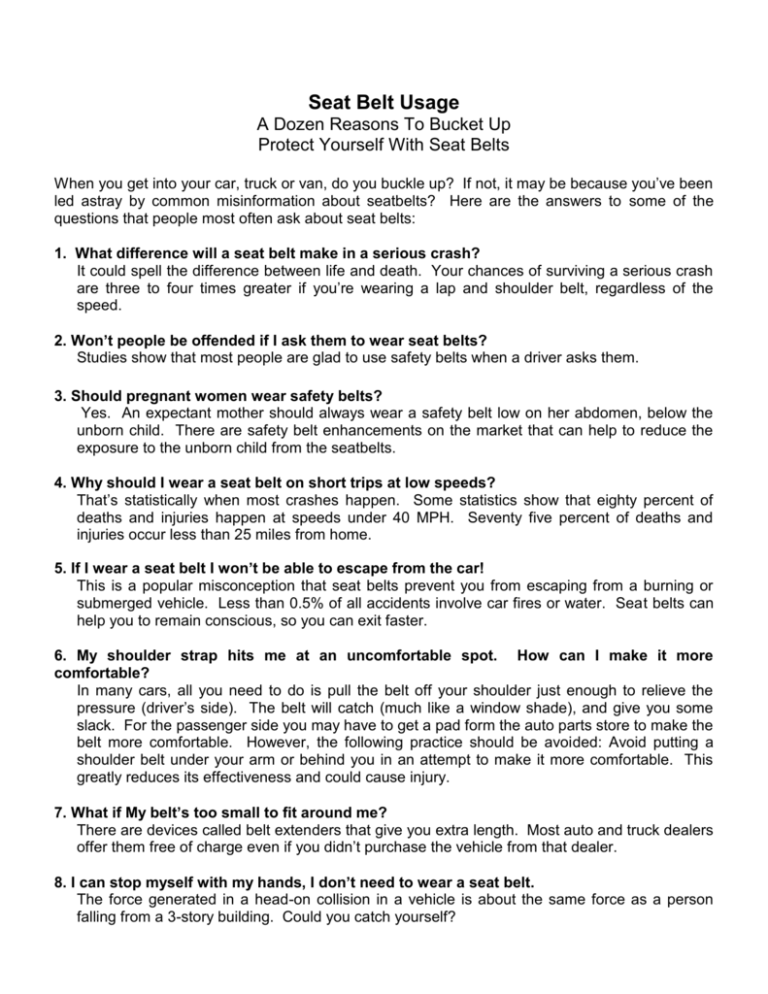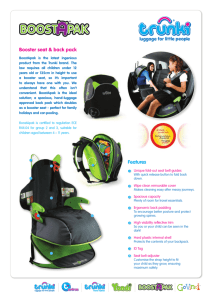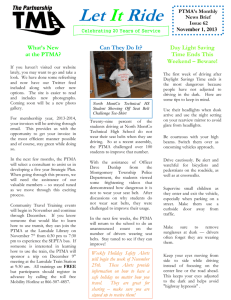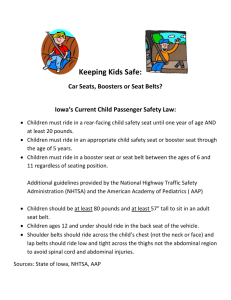Seat Belt Usage - Tool Box Topics
advertisement

Seat Belt Usage A Dozen Reasons To Bucket Up Protect Yourself With Seat Belts When you get into your car, truck or van, do you buckle up? If not, it may be because you’ve been led astray by common misinformation about seatbelts? Here are the answers to some of the questions that people most often ask about seat belts: 1. What difference will a seat belt make in a serious crash? It could spell the difference between life and death. Your chances of surviving a serious crash are three to four times greater if you’re wearing a lap and shoulder belt, regardless of the speed. 2. Won’t people be offended if I ask them to wear seat belts? Studies show that most people are glad to use safety belts when a driver asks them. 3. Should pregnant women wear safety belts? Yes. An expectant mother should always wear a safety belt low on her abdomen, below the unborn child. There are safety belt enhancements on the market that can help to reduce the exposure to the unborn child from the seatbelts. 4. Why should I wear a seat belt on short trips at low speeds? That’s statistically when most crashes happen. Some statistics show that eighty percent of deaths and injuries happen at speeds under 40 MPH. Seventy five percent of deaths and injuries occur less than 25 miles from home. 5. If I wear a seat belt I won’t be able to escape from the car! This is a popular misconception that seat belts prevent you from escaping from a burning or submerged vehicle. Less than 0.5% of all accidents involve car fires or water. Seat belts can help you to remain conscious, so you can exit faster. 6. My shoulder strap hits me at an uncomfortable spot. How can I make it more comfortable? In many cars, all you need to do is pull the belt off your shoulder just enough to relieve the pressure (driver’s side). The belt will catch (much like a window shade), and give you some slack. For the passenger side you may have to get a pad form the auto parts store to make the belt more comfortable. However, the following practice should be avoided: Avoid putting a shoulder belt under your arm or behind you in an attempt to make it more comfortable. This greatly reduces its effectiveness and could cause injury. 7. What if My belt’s too small to fit around me? There are devices called belt extenders that give you extra length. Most auto and truck dealers offer them free of charge even if you didn’t purchase the vehicle from that dealer. 8. I can stop myself with my hands, I don’t need to wear a seat belt. The force generated in a head-on collision in a vehicle is about the same force as a person falling from a 3-story building. Could you catch yourself? 9. Will a seat belt protect my child? Yes, if your youngster’s too big or too old to ride in a safety seat. The general rule is that a child outgrows the safety seat when he or she reaches 4 years or weighs over 40 pounds. You should see to it that your child buckles up (or gets buckled up) every time they are in your vehicle. 10. If airbags are in a vehicle, do I still need to buckle the seat belt? Yes. Air bags are not a substitute for seat belts. They are meant to be used together. Since airbags offer protection in frontal crashes only, seat belts are needed to protect in rear, side and rollover crashes. 11. In a crash it’s better to be thrown free of the car. You are much more likely to be killed if you’re thrown out of the car. A buckled safety belt can keep you in the vehicle, protected by the surrounding metal. 12. I don’t buckle up because I am a great driver. You may be, but you’re not the only driver on the road. No one ever believes it will happen to them, but it does. Tens of thousands of people are killed every years because they fail to wear seat belts. Make it a Habit It’s the state law and it’s also company policy. Now you know the facts; start buckling up. If you make it a habit to do it every time, you won’t even think about it. And you can drive with the peace of mind that your chances of avoiding death or serious injury are far greater every time you get in a vehicle. Your company should set a seat belt policy. This policy should state that seatbelts are mandatory for all company vehicles. This should be true for any one driving their own vehicle for company business as well -- remember it will be your Workers’ Compensation Insurance that will have to pay for any injuries to your employees while driving for company business. Other Miscellaneous Facts About Seat Belts The number of auto occupants killed each year in the U.S. is equal to a fully loaded 727 passenger jet crashing every single day of the year. The 80% of accidents occur at less than 40 MPH and within 25 miles of home. Collisions involving fire or submersion total only less than 1/2 of 1% of all accidents. Traffic crashes are the number 1 killer of Americans aged 1-38. Your chances of being in a traffic accident during a 75 - year lifetime are better than 8 out of 10. Wearing your seat belt cuts your risk of being killed in an accident by 75%. Accident victims not wearing seat belts have an average costs 4 times higher than those wearing belts. Motor Vehicle crashes are the leading cause of lost productivity in the workplace and cost employers nearly $3 billion annually. The leading cause of work related fatalities is vehicle accidents. The Best Defense against drunk drivers is your Seat Belt. Always Wear Your Seat Belt





